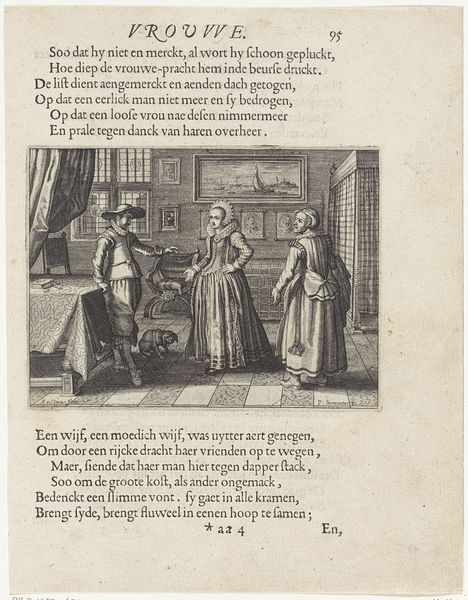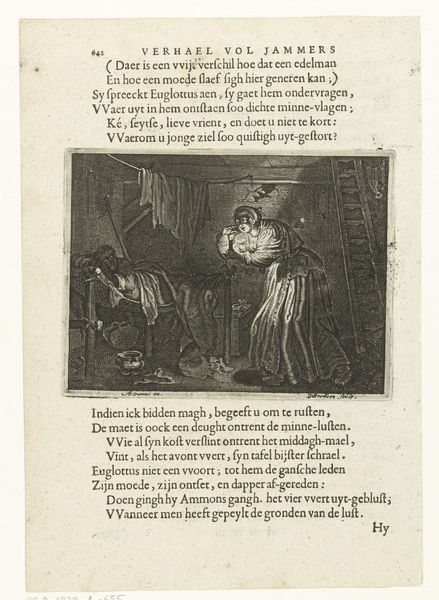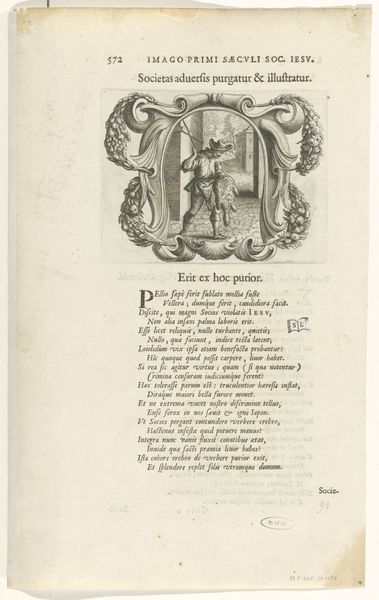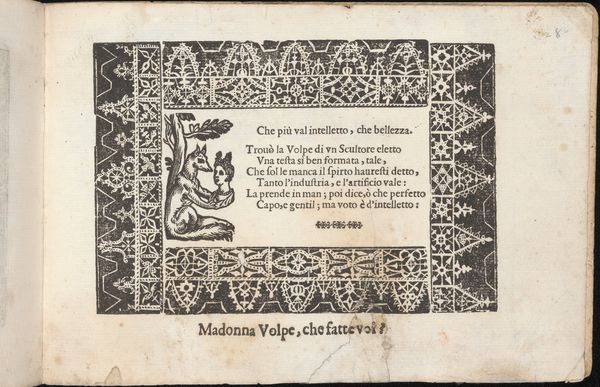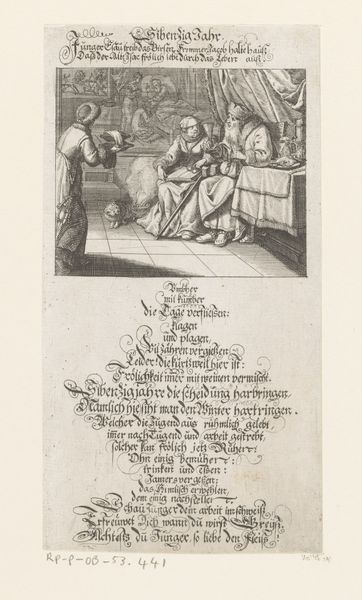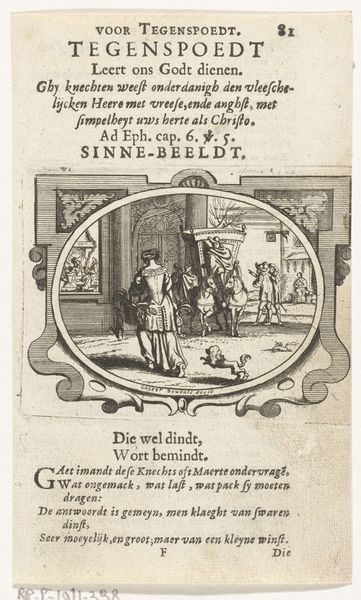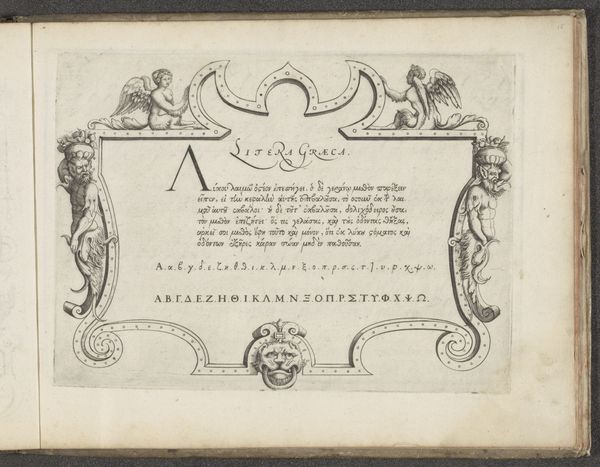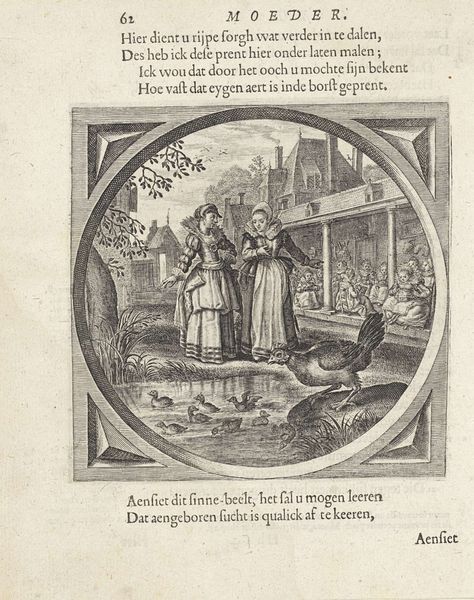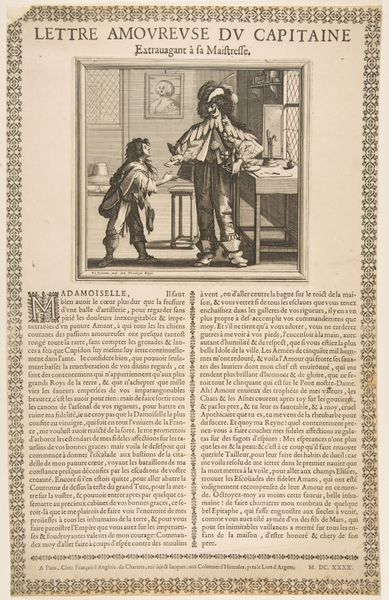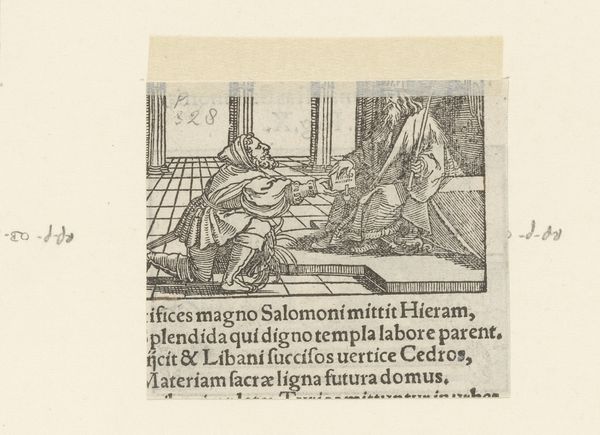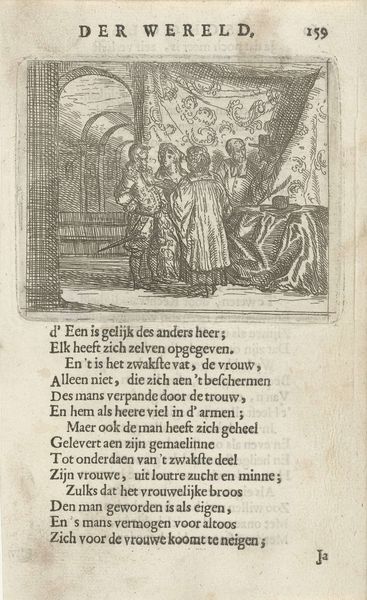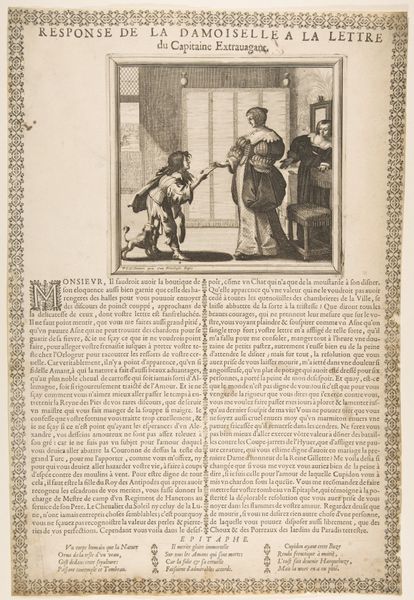
drawing, graphic-art, print, etching, paper, engraving
#
drawing
#
graphic-art
# print
#
etching
#
paper
#
engraving
Dimensions: 305 × 204 mm
Copyright: Public Domain
Curator: I focus on the physical production itself. The etching and engraving processes are really central here. The lines, the cross-hatching… It’s all about the labor. Editor: So we're looking at a print, an etching to be specific, by Manuel Manilla called "Madame, Your Little Rabbit…". It doesn't have a date. It features two women and a rabbit and some text. It's quite playful, don't you think? Almost cartoonish in a way. How can we unpack this through its materiality? Curator: Absolutely. Notice how the lines aren't perfectly consistent. This suggests a certain speed and perhaps a democratized production, far removed from the refined, academic engraving. How do the materials of production shape the image and our understanding of it? Editor: That's interesting. The text beneath the image is central to our experience of this artwork as a cultural product... Almost like a poster, perhaps? Is the intention less to be "art" and more to make a pointed remark about society, or to poke fun? Curator: Exactly! This challenges traditional art history’s distinction between ‘high’ art and popular imagery. Consider what the ready availability of inexpensive printed images meant for distributing ideas or humour, for local news, or perhaps commentary about food or consumerism in general. The rabbit prefers chocolate to grass, reflecting changes in consumption. What societal shifts do you see implied here? Editor: The material itself - this print- allows access to this kind of humor across social boundaries. It connects the 'madame' with everyone else through this joke. I guess I thought more about who made the image than the image itself. Curator: Precisely. The medium allows him to cheaply produce images for mass circulation. It’s an art tied to its mode of production and dissemination. Editor: Thanks; seeing it as something 'made' instead of just something 'pictured' changes the focus for me.
Comments
No comments
Be the first to comment and join the conversation on the ultimate creative platform.
